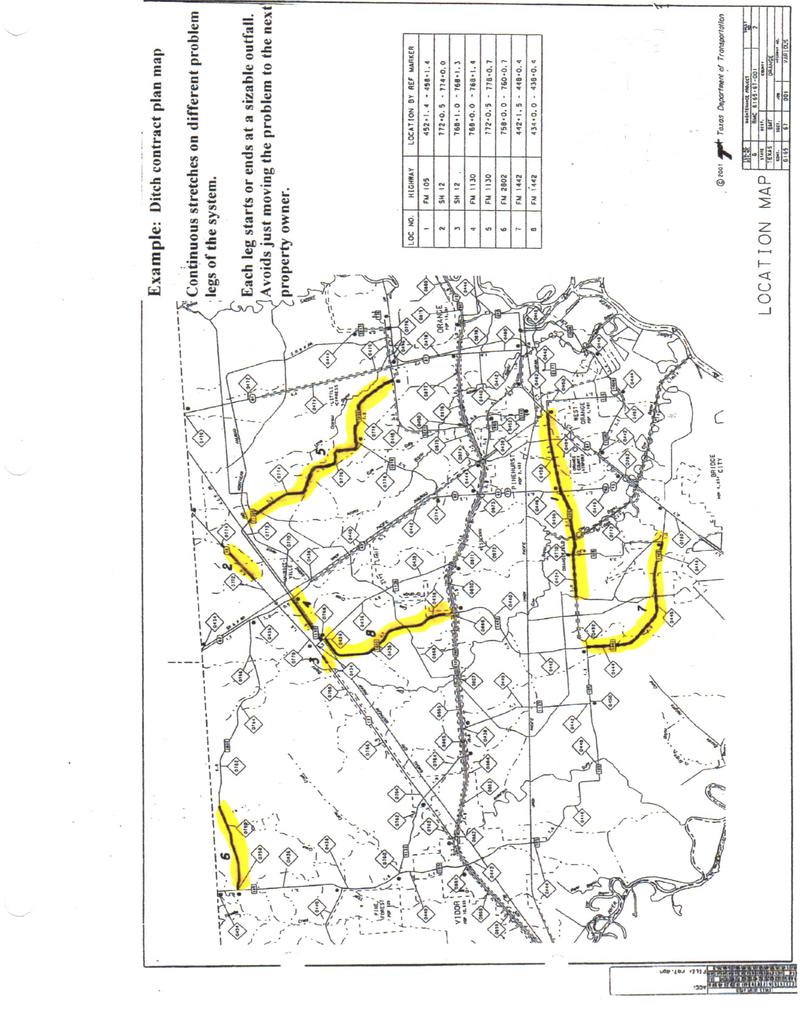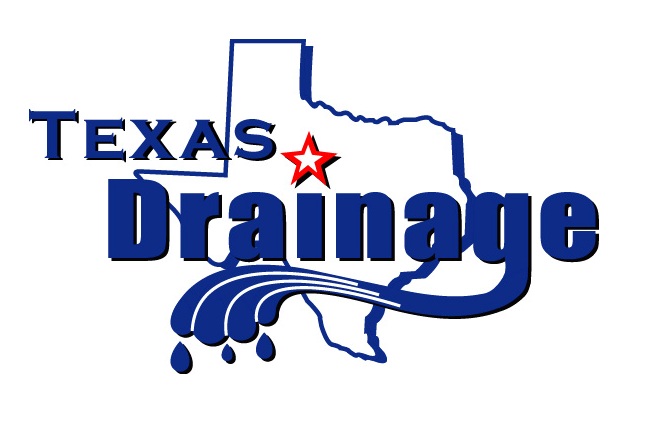Texas Drainage Inc.
Call us at: 832-683-3443
Writing a Competitive Ditch Maintenance Contract:
A Guide for Contract Administrators
A properly specified site-specific ditch maintenance contract that contains the following elements will eliminate much uncertainty from the bid process and encourage the greatest number of bidders to participate. It will also minimize the amount of effort required on the part of a department to ensure that the work is being performed to specifications. These specs have many side benefits that will ensure that you are achieving the greatest results with your ditch maintenance budget.
Our experience tells us a competitved ditch maintenance contract should be:
Site Specific to Highways:
A roadside ditching contract should permit continuous ditching to as great a degree as possible, and minimize unnecessary demobilizations/remobilizations for crew(s).
When specifying ditches for cleaning, name the highway only as the "Location" of work and the nearest crossroad or obvious landmark at each end to specify the "Limits".
It is not necessary for your department to determine what parts of the ditches in that span actually need to be cleaned as this will be determined by laser-grade by the contractor at the time the work is performed. When the inspector rolls off the footage cleaned, that amount is entered for payment. Footage allotted on the contract for that location, but not used, can then be reserved for additional ditching needed in another location of your choosing.
Additionally, designating highways with such limits makes it easy for the potential bidder to ride out the proposed project, assessing traffic control needs and dump site proximity enabling the bidder to closely establish cost. This eliminates a lot of uncertainty from the bid process and the less uncertainty, the lower the bids.
Based on Lineal Foot Measurement:
Many ditching contracts are let on the basis of cost per cubic yard of material moved. This requires a department to post an inspector on site full-time, counting loads and making sure trucks are full. An inspector that could be inspecting several sites per day or performing other duties is resigned to observing one active jobsite. If the contractor is being paid on a cubic volume, there is also a great incentive to excavate more material than necessary. Soil conservation measures are reduced. Collecting bids on a cost per lineal foot basis is better in many ways. A single contract inspector can fill multiple roles, and the contractor's focus is placed on achieving drainage, not moving dirt. More drainage is achieved each day and the soil/vegetation conservation is improved.
Based on Continuous Ditching:
Continuous stretches of ditch, or closely situated smaller sections may be excavated more efficiently. Think about water shed areas. Take out a map and mark your known complaint areas or locate where your "heat calls" come from. String these hot spots together as much as possible, always terminating at a major outfall. This method provides more continuous ditching and cleans out an entire leg of a storm drainage system. This reduces or eliminates calls from that area, lowers the bid price per foot and generates more ditch cleaning for your dollar. In a few budget cycles you will have cleaned several complete legs of the system and eliminated most of your complaints.
Based on Sytematic Completion:
Giving the contractor the freedom to systematically work through one area before moving to the next minimizes costly re-mobilizations, and is normally reflected in the unit price.
Specified to Include Contractor Ownership of All Excavated Material:
Downloading the responsibilty for material disposal to the contractor ensures that hauling is accomplished in the most cost-effective way. A contractor who has the freedom to find strategic disposal sites will move material more efficiently and lower unit costs.
Culvert Cleaning:
Typical driveway and crossroad culverts, 30" in diameter and smaller.
For highways that are mostly rural we recommend estimating 100 culverts per 100,000 lineal feet of ditch to be cleaned. For roads that are urban use the estimate of 500 culverts per 100,000 lineal feet. Use these ratios so you don't have to go and determine the exact number of culverts prior to putting your letting together. Should the actual number of culverts on the job be less, the culvert dollars can be converted to ditch cleaning.
Based on a Realistic Engineer's Estimate:
A department's goals will not be served effectively unless a contract goes to bid, yields a number of competitive prices, and is let successfully. Nobody likes to have a contact pulled because the bids came in way above the engineer's estimate! Assuming the above guidelines are followed, based on our experience, an estimate based on $1.75 per lineal foot* or $5.00 per cubic yard is realistic for contractors using conventional excavation equipment and dump trucks to move material. As you know, contractors that just bid off the engineer's estimate and don't come look at the job can act surprised at what the job actually entails. A reasonable estimate gives some protection from casual bidders who bring the wrong equipment and attempt to learn on the job. The serious bidders will bid the job not the estimate.
*use an estimate of $2.00 per lineal foot if the locations are restricted to 9:00am to 3:00 pm maintenance work and/or more than 10% of allotted footage is for "complaint list"
multiple locations.
Texas Drainage Inc. ® 29215-1 Waller Spring Creek Road, Waller, TX 77484

